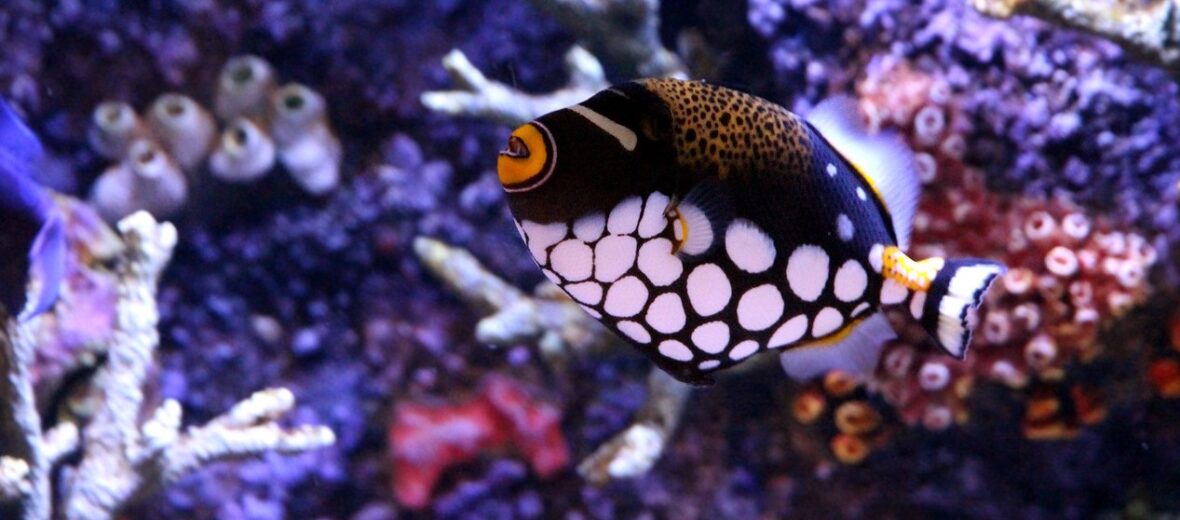
With 40 known species of triggerfish, there are plenty of colors to be seen. These sometimes aggressive fish prefer tropical and subtropical ocean reefs. The Indo-Pacific waters boast the largest collection of triggers. 1 of the most popular of all triggers is the humuhumunukunukuapua’a. That’s quite the name. It is often just abbreviated as Huma huma. These aggressive and defensive fish all have a retractable dorsal spike that they not only use for showing off their prowess but also to lock themselves in rocky alcoves when approached by a shark or other potential predator. Pollution and collection for the fish trade has hurt their overall population, but their numbers are generally stable.
First the Stats…
Scientific name: Balistidae
Weight: Up to 13 lbs.
Length: Up to 3 feet
Lifespan: Up to 22 years
Now on to the Facts!
1.) Triggerfishes sound out a pig-like grunting noise when they spot a predator.
2.) These fish use their powerful jaws to crush shellfish and more. They will also bite onto a fish and project a jet stream of water from their mouths that is so strong and fast it creates a clicking sound. This pulverizes their prey into smaller bite-sized chunks.
3.) They are typically very aggressive and will often battle other fish, including their own kind, for territory.
4.) Hawaii’s state fish is the reef triggerfish.
5.) Triggers get their namesake due to the extendable dorsal fin that looks like a trigger. They stick this “trigger” up when they feel threatened.
But wait, there’s more on the triggerfish!
6.) In an effort to protect their nesting site triggerfish have been known to attack divers, perceiving them as threats to their fry.
7.) Food is just a way of life for these predators. They spend most of their day eating and looking for food.
Did you know…?
Many aquarists keep triggerfish as pets. However, they are fiesty and tend to do best in aquariums with larger dominant fish or other triggers, as they have been known to harass or downright attack other aquarium fish.
8.) A few of their favorite prey items include crabs, shrimp, sea urchins, sand dollars, sea cucumbers, sea stars, other fish, and more.
9.) Male and female triggerfish perform various pre-spawning activities: touching and blowing water. A male and female blow water on the sandy bottom, typically in the same spot at the same time, and then set up their egg site. They also touch their abdomens on the sea floor as if they are spawning.
10.) Females can lay up to 400,000 eggs. Most of those will not make it to adulthood due to mass predation by other sea life and even other triggerfish.
Now a Short Triggerfish Video!
Also, check out the Critter Science YouTube channel. Videos added frequently!
Want to suggest a critter for me to write about? Let me know here.



